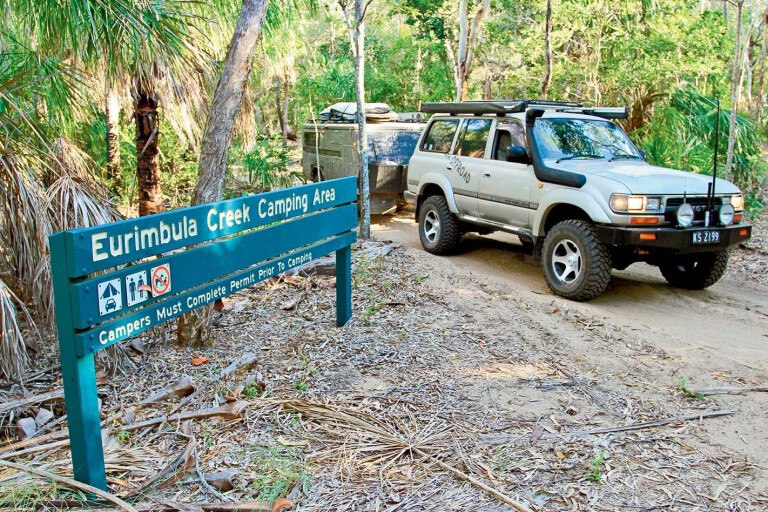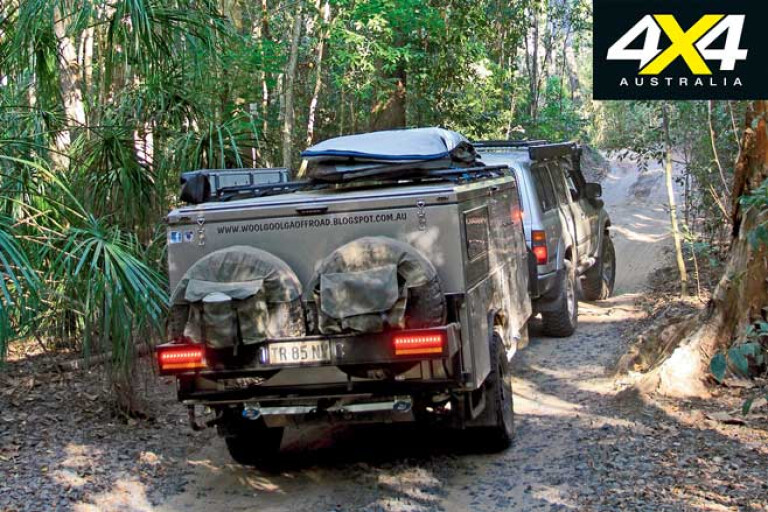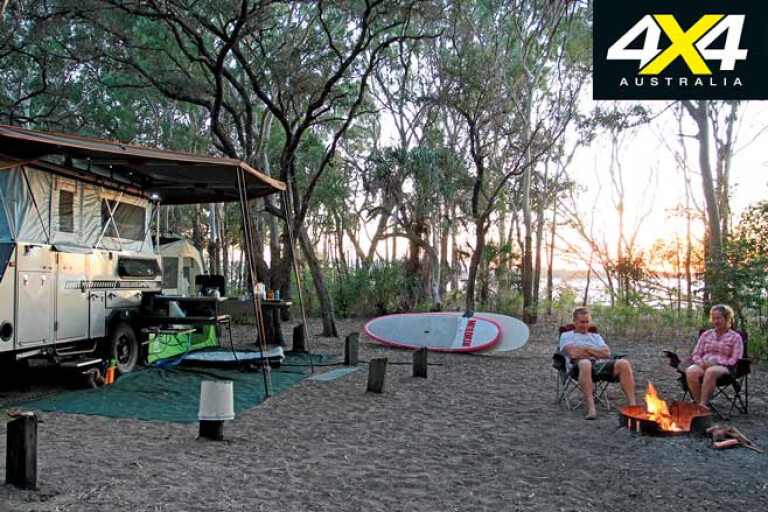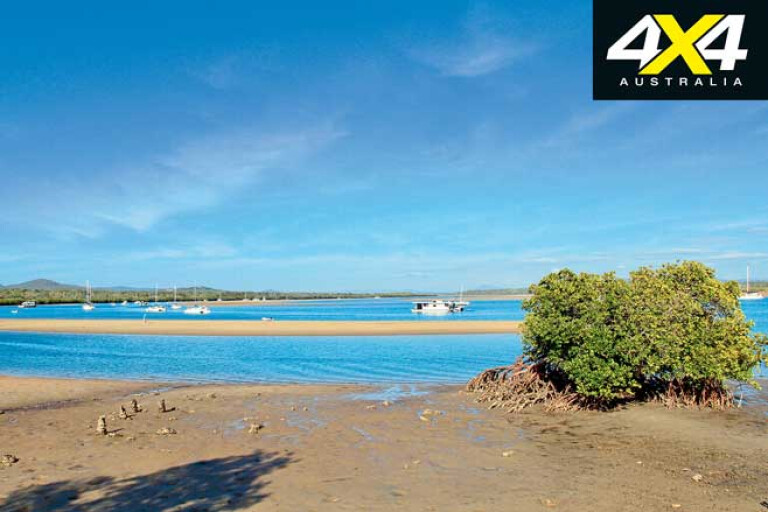
Eurimbula National Park is located almost 500km north of Brisbane, near the stunning coastline of Agnes Water and Seventeen Seventy (1770). It’s a place of natural beauty, where you can stop and unwind for a while. Getting back to nature never hurt anyone, and here at Eurimbula you won’t find better.
Don’t for one minute think you can test your off-road skills here on huge hill climbs or through deep bog holes; there’s only one narrow road that leads to and from several camps, and the only challenge you’re likely to encounter is negotiating around oncoming vehicles.

To get to Eurimbula from Brisbane, follow the Bruce Highway north until the turnoff to Agnes Water and then swing a left at the ‘National Park’ sign approximately 10km before Agnes. Those who need supplies can stock up at Agnes Water, where there’s a number of outlets with food, fuel and bait. Walking around town you’ll find a cultural mix of islanders, backpackers, retirees and, of course, grey-haired nomads who spend time here soaking up the tropical Queensland sun.
With only 17 camping sites in Eurimbula NP it’s a good idea to book ahead, but there’s decent phone coverage in the park if you prefer to look before you buy. The first 10km of the road into the NP is unsealed but usually well-maintained; although, the last section can be rough in places, albeit quite beautiful as it twists it way through a mixture of gum forest, dry rainforest and stunning pockets of cabbage tree palms that seem to reach out like a drive-through car wash, with their massive fronds brushing along the sides of your 4x4.

About halfway along the National Park road, keep an eye out for the Ganoonga Nnoonga lookout track, which is one of the park highlights. The easy 30-minute walk leads to a 60m-high lookout that offers stunning views across the lower heathlands and up into the mountains.
The last section of the National Park road has a sandy base but isn’t overly challenging, and despite the narrow road there are plenty of pull-over areas if you happen to encounter oncoming traffic.
Camp can be set up wherever there’s an available spot, as there are no set sites with the camp bookings. All campsites have a decent fire ring (bring your own wood), composting toilets, huge sheltered eating areas and water tanks filled with fresh water.

This is beachside camping at its best, with most campsites only 80-200 steps to the beach along dedicated walking tracks – fishermen and beachcombers will adore this place. And with a mix of tall coastal palms, pandanus, beautiful gums and other rich rainforest trees, all campsites offer plenty of shade.
Those who enjoy soaking up nature will love ambling along the beach with the sand between their toes, listening to the waves crash and the birds singing. Not much else happens at Eurimbula, unless you make your own fun by bringing a kayak or an SUP to explore the creek and to access the other side at Bustard Beach. If you’re a keen fisher, there’s bream, flathead or something bigger in both Eurimbula Creek and the ocean. As Eurimbula is very close to the Great Barrier Reef and located in a marine park, there are strict guidelines on fish sizes and any collection of shells and other marine life.
We also saw a few land-dwelling creatures around camp including brush turkeys, echidnas, cane toads and an array of birds, and it’s reported that coastal emus frequent the beach.

While hardcore off-roaders need not apply, Eurimbula NP is perfect for those who just need a break and want to get back to nature, with coastal camping and easy recreational activities on offer. It’s a hidden gem that, once visited, usually ends up on most travellers’ ‘must return to’ lists.
Day Trip to 1770

Much more than just another boutique holiday village, Seventeen Seventy (1770) has very significant importance to Australia and Queensland. Back in May, 1770, Captain James Cook landed at nearby Round Hill, the first landing of Cook to what is now called Queensland. In 1935, after the area was surveyed, the town’s name was changed to 1770. It was also here that botanist Joseph Banks came ashore – his only landing in what is now Queensland – and collected 33 new plant species.
In the town of 1770 a stone monument has been erected where Cook proclaimed his landing, and there’s a stunning coastal walk that leads along Round Hill Creek to the headland. One of the highlights along the way is the deep gully of pristine palms that creates its own ecosystem where, at the right time of the year, masses of butterflies congregate to mate and then die.

Along the walking track are stunning views up the coast to Bustard Head and the lighthouse, which was named by Cook when his convoy landed and shot a bustard turkey for food. At the end of the Round Hill walk, a viewing platform provides 180-degree views along the coastline and out to the Coral Sea. The town holds an annual re-enactment of Cooks’ landing, for historical celebrations.
Another attraction is the anchor of the Countess Russell sailing ship, which has been set up as a monument to those who died after it ran aground south of Agnes Water in 1873.
The ship set sail from London with nearly 350 immigrants, but 17 people had died by the time it reached Australia. An outbreak of typhoid then hit the ship, with another eight deaths. After the final passengers disembarked, the ship was loaded with coal in Newcastle and, on its way north, it ran aground after being hit by a huge gale at the now-named Wreck Point.

COMMENTS